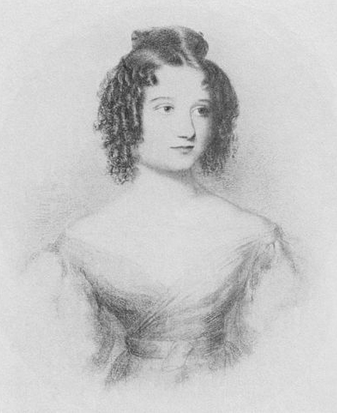Reseña
[Ada Lovelace was an English mathematician and writer chiefly known for her work on Charles Babbage's proposed mechanical general-purpose computer, the Analytical Engine. She was the first to recognise that the machine had applications beyond pure calculation and to publish an algorithm intended to be executed by a machine, that why she is considered to be the first computer programmer.]
Ada Lovelace, in Wikipedia, (17-01-2025). <https://en.wikipedia.org/wiki/Ada_Lovelace>
Justificaciones
- She did her own research about Charles Babbage's mechanical general-purpose computer, the so-called Analytical Engine.
- Among her notes on the computer, we can find what we consider today to be the first algorithm (Note G) intended to be carried out by such a machine. In her notes, she described in detail the calculations with punched cards (binary code) to be executed by Babbage's Analytical Engine.
- She is referred to as the first computer programmer.
- Her letters have survived to our day.
- She was also a writer.
Biografía
Ada Lovelace was born in London, United Kingdom on December the 10th 1815. Lovelace was the only legitimate child of Lord Byron and Anne Isabella Milbanke Byron.
She had private teachers for mathematics and science. She was mostly self-taught. In 1833, her mother introduced her to Mary Sommerville, who was her private tutor.
When Ada was 17, she came across the work of Charles Babbage during a Dionysus Lardner conference on June 3rd, 1833. Babbage had held the Lucasian Chair of Mathematics in the University of Cambridge since 1828. Babbage became her tutor; he was impressed with the way she understood his computer. From then on, Ada worked with Charles Babbage, who is referred to as "the father of computers" because his Analytical Engine works under the same principles than current computers. Babbage was so impressed with her intellectual and analytics capabilities that he called her “The Enchantress of Numbers”.
In 1843, Ada Lovelace translated the Italian mathematician Luigi Menabrea's article on Babbage's newest proposed machine, the Analytical Engine. With the article, she appended a set of seven notes enumerated from A to G. This translation was published in 1843 in the journal “Scientific Memoirs” with the title of “Sketch of the analytical engine invented by Charles Babbage” and signed with her initials “A.A.L.
Note G includes, in complete detail, a method for calculating a sequence of Bernoulli numbers using the Analytical Engine, which might have run correctly had it ever been built.
Regardless of the current controversy as to whether Ada Lovelace was the first person to write a program for a computer, her contributions to computing are far more important. Ada Lovelace had a much broader vision than Babbage himself as she deduced and foresaw the ability of machines to go beyond simple numerical calculations. She foresaw the possibility that machines could compose music and make graphs. She realized that the information stored in machines could also be symbolic in nature. Finally, she provided the first idea of what software engineering would become: “The Analytical Machine has no pretensions to create anything. It can do anything we know how to command it to do” (Ada Lovelace). Therefore, we could say that Ada Lovelace was the first Software Engineer in history since: she studied, developed and created the documentation on a certain automatic processing system.
After her work with Babbage, Ada Lovelace continued with different projects. In 1884 she told her friend Woronzow Greig of her intention to create a mathematical model of how the brain gives rise to thoughts and the nerves to feelings. In 1851, she wrote to her mother mentioning that she was working on the relationship between mathematics and music.
Ada Lovelace died at the age of 36 of cancer.
Ada Lovelace, in Wikipedia, https://es.wikipedia.org/wiki/Ada_Lovelace> (20-01-2025)
Enfoque Didáctico
This author can be studied in:
- Mathematics, when studying the binary system.
- Computer science when studying programming.
- Technology in digital electronics and logic gateways.
- Geography and history when studying science in the 19th century.
- English.
Documentos
